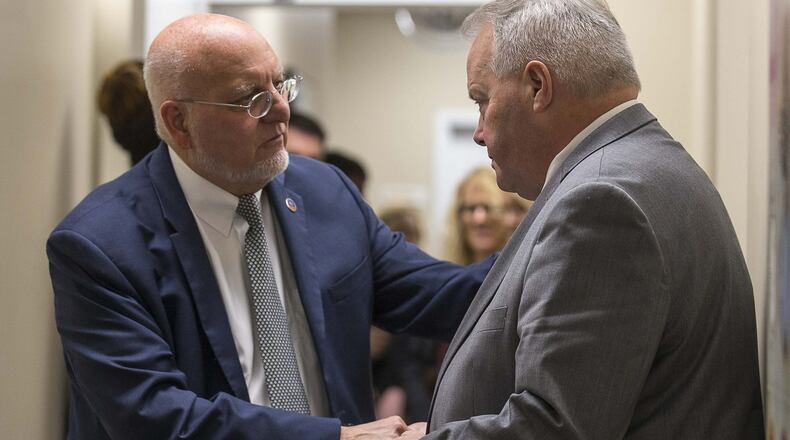Dr. Robert Redfield, director of the Centers for Disease Control and Prevention, said Monday that eradicating HIV is no longer an aspirational goal — it's doable.
Redfield made the remarks while visiting an HIV clinic in DeKalb County. The county is the focus of an intense effort aimed at preventing the spread of the virus and was one of three sites chosen earlier this year by the CDC to receive $1.5 million for a pilot program. Baltimore and East Baton Rouge are the other locations.
“We have the science to put an end to HIV in America,” said Redfield. “We’ve had it for some time, but we really just didn’t have the collective capacity to bring everyone together, particularly in the community, and to get engaged.”
The pilot program is part of a Trump Administration initiative to cut transmission of the disease by 75% in the next five years and by 90% in the next 10 years.
On the tour, Redfield was accompanied by Dr. Kathleen E. Toomey, commissioner of the Georgia Department of Public Health, and other officials. They emphasized the importance of a coordinated effort and sharing of information to combat HIV in Georgia, which has the second highest rate of new diagnoses of HIV in the nation— behind only Washington, D.C.
In 2017, Georgia had more than 58,700 residents living with HIV. There were 24.9 diagnoses per 100,000 people. Nationally in 2017, the rate of HIV diagnoses was 16 per 100,000 people.
As part of the pilot program, which ends in a couple of weeks, public health officials have increased testing and are promoting the use of pre-exposure prophylaxis (PrEP) — a pill taken daily to block HIV — for those at high risk of infection.
MORE: The Silent Epidemic: Counting the cost of being ignored
The funds also have been used to increase outreach into the community, which includes setting up mobile testing spots in DeKalb County in places like flea market parking lots and apartment complexes, and at the DeKalb County jail. At the same time, eight staff positions were added at clinics, including a nurse, a health educator and a patient navigator.
Formidable obstacles — and sobering trend lines — remain.
Southern states accounted for 52% of the 38,739 new HIV diagnoses in 2017. And, even though it’s been decades since the early years of the HIV and AIDS epidemic, the stigma of a diagnosis remains a major barrier to to care, Redfield said.
MORE: Click below to read candid accounts of black gay men with HIV
About the Author
The Latest
Featured



